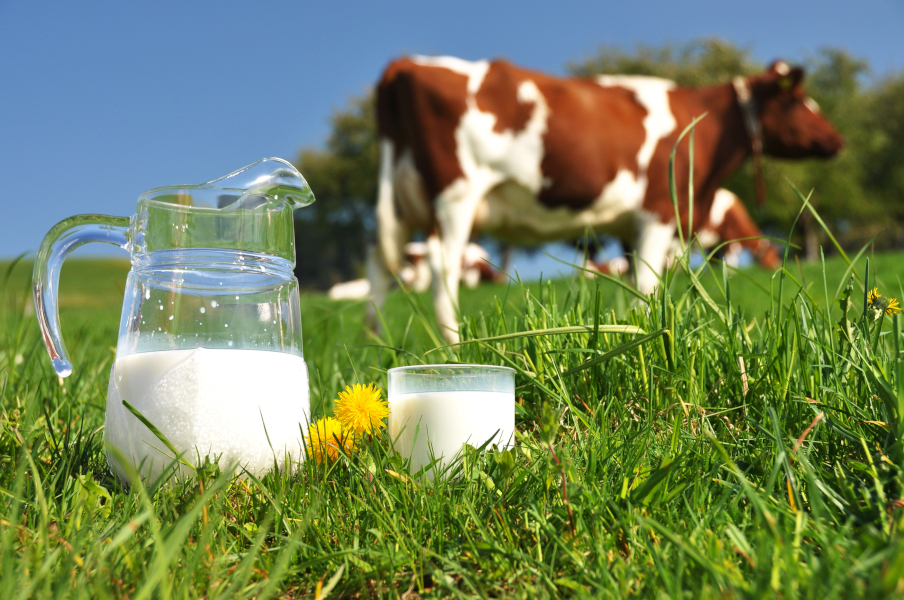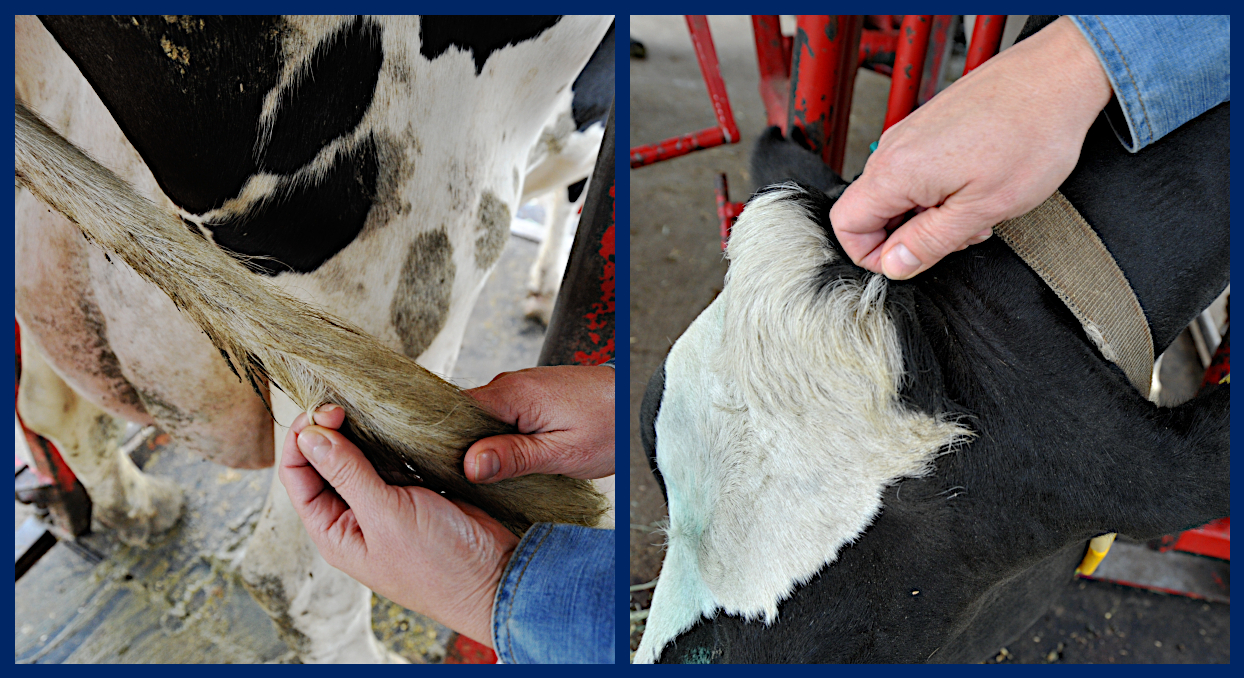Quick Summary
 Click here for Price and Turnaround Time
Click here for Price and Turnaround Time
Phenotype: The gene underlying the production of kappa-casein in cow's milk shows polymorphisms which affect the amount of protein produced. Higher levels of kappa-casein are associated with increased milk protein and casein content, and better cheese yield.
Variants:
- A = associated with lower relative concentration of kappa-casein in milk
- B = associated with higher relative concentration of kappa-casein in milk
Breeds appropriate for testing: Many dairy breeds
Explanation of Results:
- Cows with AA genotype will produce lower amounts of kappa-casein in their milk; least favorable genotype for cheese production.
- Cows with AB genotype will produce intermediate amounts of kappa-casein in their milk.
- Cows with BB genotype will produce higher amounts of kappa-casein in their milk; most favorable genotype for cheese production.
Cattle Milk Protein Panel
$93 per animal
Sample Collection
Most of the cattle DNA tests offered by the VGL are carried out using cells from the roots of a hair sample (roughly 20-40 hairs).
Hair samples should be taken from the switch of the tail, the poll, or the neck.

1. Clean (use comb if possible) tail switch, poll, or neck by removing all loose hair and foreign matter.
2. Use fingers or pliers to grasp approximately 8-10 hairs close to the skin and pull. Pull (do NOT cut) hair strands. Examine the end of hair strands for presence of root bulbs. Hair roots are necessary for DNA testing. If the majority of hair strands lack the root bulbs, discard hair and start again.
3. Repeat until you have approximately 20-40 hairs with root follicles attached.
4. Place the 20-40 hairs with root follicles attached in the envelope and seal with the animal’s ID written on the envelope. If hairs are long they can be taped to the submission form. Do not tape the roots.

5. Repeat steps 1-4 for each additional animal being sampled.
Note:
- Hair should be dry.
- If hair has excess dirt and debris, please brush out if possible before pulling hairs for sample.
- Do not cut the hair! The roots contain the DNA for testing.
- When sampling several animals in the same session, make sure that there are no hair strands in your hands to reduce the possibility of sample contamination. Clean hands and/or pliers if possible.
Cow's milk is comprised of six main proteins: four types of casein (including beta-casein and kappa-casein) and two types of whey protein (beta-lactoglobulin and alpha‐lactalbumin). Kappa-casein is an important gene for protein yield and percentage in milk.
This test identifies the two most common kappa-casein variants, A and B. The A variant and AA genotype are associated with higher milk production. The B variant and BB genotype are associated with increased milk protein and casein content, and better cheese yield. Relative to protein content and cheese production, BB is the most favorable genotype, AB is intermediate, and AA is the least favorable.
Other dairy milk protein tests offered by the VGL:
